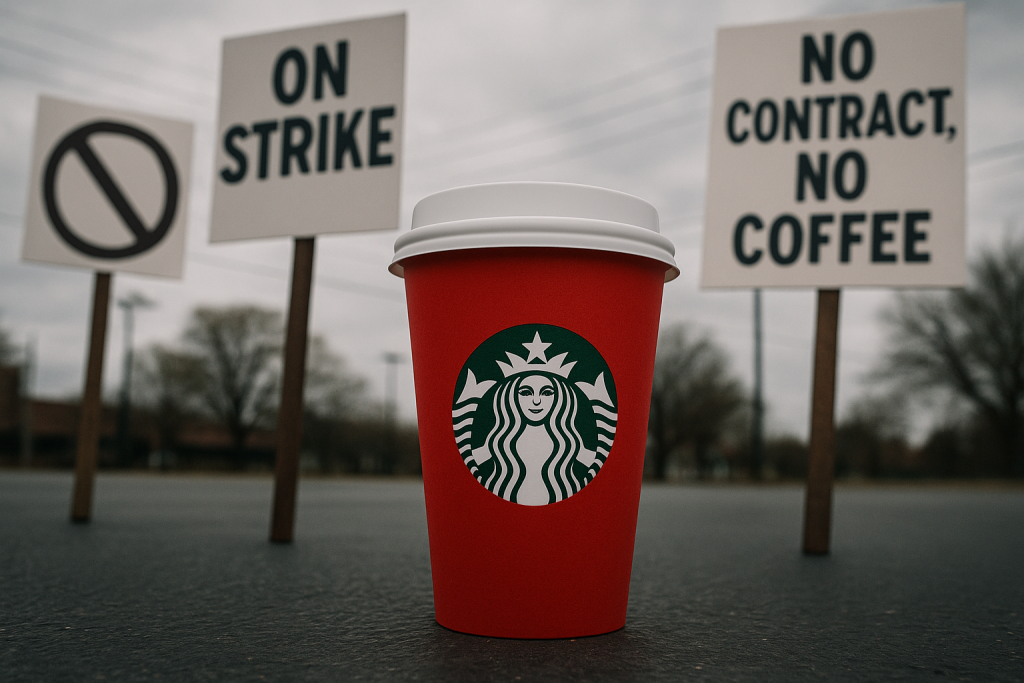Starbucks saw a coordinated walkout by more than 1,000 unionised baristas across the United States on Thursday, aligning their open-ended strike with one of the company’s busiest days of the year: Red Cup Day.
The event, which usually brings in a surge of foot traffic due to the distribution of collectible holiday-themed reusable cups, faced disruption at over 65 stores in more than 40 cities.
Starbucks Workers United, the union representing employees at more than 550 stores, timed the industrial action to maximise visibility and pressure.
The group warned the strike could grow to become the coffee chain’s largest and longest work stoppage.
Workers demand pay and benefit improvements
The union is pressing for a collective bargaining agreement that addresses pay structures, improved benefits, and working conditions.
The strike follows a vote last week in which baristas approved potential strike action if no contract had been reached by 13 November.
Following last week’s strike vote results, Starbucks stated that it remains prepared to serve customers throughout its nearly 18,000 company-operated and licensed stores this holiday season.
Since negotiations stalled late last year, no agreements have been finalised.
Despite statements from both sides indicating a willingness to return to the table, discussions remain at a standstill.
Starbucks and the union have each blamed the other for walking away from talks, leaving thousands of workers without a contract for over a year.
Starbucks’ unionisation effort grows
The walkout affected stores in key metropolitan areas, including Seattle, New York, Philadelphia, Dallas, Austin, and Portland.
Workers plan to hold rallies in more than a dozen cities at 4 p.m. local time, underscoring growing momentum within the Starbucks union movement.
Since late 2021, when the first Starbucks store in Buffalo, New York, voted to unionise, the campaign has grown steadily.
Starbucks Workers United now represents baristas in more than 550 outlets nationwide.
However, the union remains a minority force within the company, with Starbucks stating that around 9,500 employees, approximately 4% of its US cafe workforce, are part of the organised labour force.
Red Cup Day faces pressure from within
The decision to strike on Red Cup Day wasn’t coincidental.
Known for driving significant customer traffic and boosting seasonal sales, the annual event typically hands out thousands of reusable red cups with qualifying purchases.
The union has labelled this protest #RedCupRebellion across social media, aiming to highlight internal discontent and amplify its message to customers and the broader public.
With in-person rallies, store closures, and digital campaigns, unionised workers are seeking to compel Starbucks into formal contract agreements.
Previously, the company has expressed a willingness to engage with workers but maintains that certain union tactics have hindered constructive dialogue.
Meanwhile, the union continues to urge Starbucks to return to meaningful negotiations to resolve longstanding issues around pay equity, scheduling stability, and workplace protections.
The post Starbucks strike hits Red Cup Day as union pushes for new contracts appeared first on Invezz


